No products in the cart.
Table of Contents
What makes bonsai art more appealing is when the tree species start producing flowers. We know that bonsai trees are already a beauty, but what more when it bears attractive flowers? Although not all species are flowering bonsai trees, you can choose one that produces spectacular blooms.
In this article, we have gathered the six popular flowering bonsai trees that you could choose from.
Top 6 Flowering Bonsai
Satsuki azalea
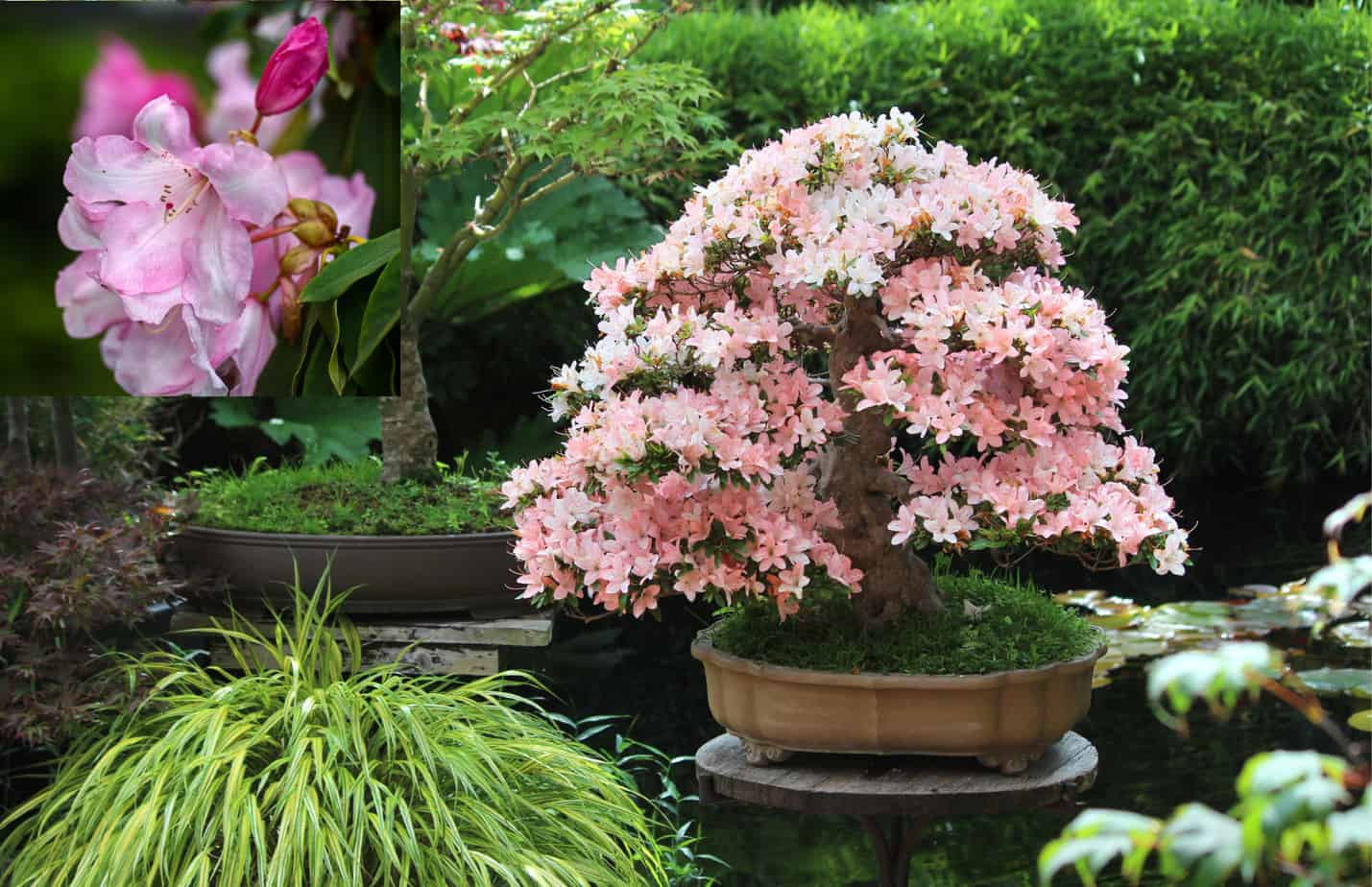
Satsuki azalea is a flowering shrub of the Rhododendron genus. It’s a native of Japan. This plant is a perfect species for flowering bonsai because of the color patterns of the flower forms. They produce large blooms in colors of white, pink, red, red-orange, and purple from May to June.
The azalea bonsai tree can grow from 3 to 4 feet tall. And there are many varieties that you can choose from.
Care Guide:
Your Satsuki azalea bonsai will be happy in a location with bright but indirect light. Refrain from exposing it under the full sun as this may cause the flowers to fade easily. Plant this bonsai plant in acidic soil. You can use kanuma as a potting mix.
Watering is essential because azalea bonsai don’t like having dry soil. Make sure to water once a day to keep the plant well-hydrated. But it’s also important to not overwater so the soil won’t get soggy.
Use equal amounts of NPK to boost plant growth during the growing season. However, when the fall season comes, reduce the amount of nitrogen. You can place your azalea bonsai tree outside unless the temperature drops below 45°F (7°C).
Use aluminum wire in shaping the tree. You can do hard pruning after flowering.
Bougainvillea
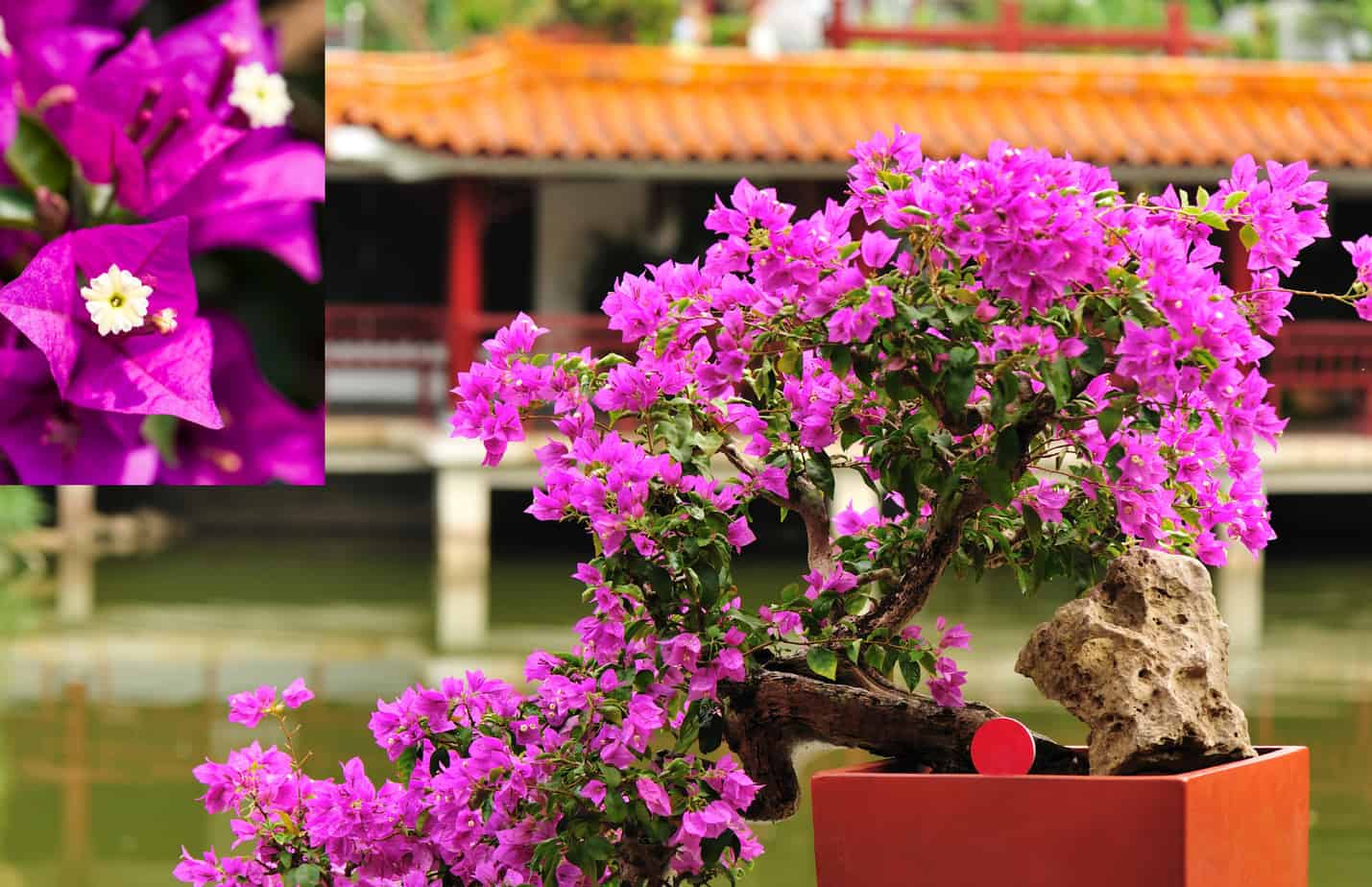
Bougainvillea is known for its showy sepal-like bracts having a variety of colors from pink, magenta, purple, red, orange, white, or yellow. These colorful bracts enclose the tiny flowers inside making them appear highly attractive.
This plant has thorny trunks and branches. They can grow from 1 to 12 meters high in a natural environment. A good candidate for flowering bonsai trees, bougainvillea will surely make a spectacular sight.
Care Guide:
It isn’t hard to care for a flowering bonsai such as bougainvillea because this plant is quite hardy. It can thrive in a wide range of temperatures from 40°F to 80°F (4 to 26°C). If taken as an indoor plant, make sure to maintain it within 60°F to 70°F (16°C to 21°C).
The secret to profuse flowering is to expose your bougainvillea plant to full sunlight for at least 6 hours a day. It will help produce full bloom with bright colors. Do daily watering to keep the soil moist but not wet. And it’s essential to remember that it prefers to grow in a slightly acidic soil pH.
You should provide regular feeding through the addition of diluted liquid fertilizer every 7 to 10 days. Bougainvillea bonsai plant will need lots of nutrition.
Prune it regularly according to the desired size and shape. Just be careful because it has thorny branches.
Wisteria Bonsai
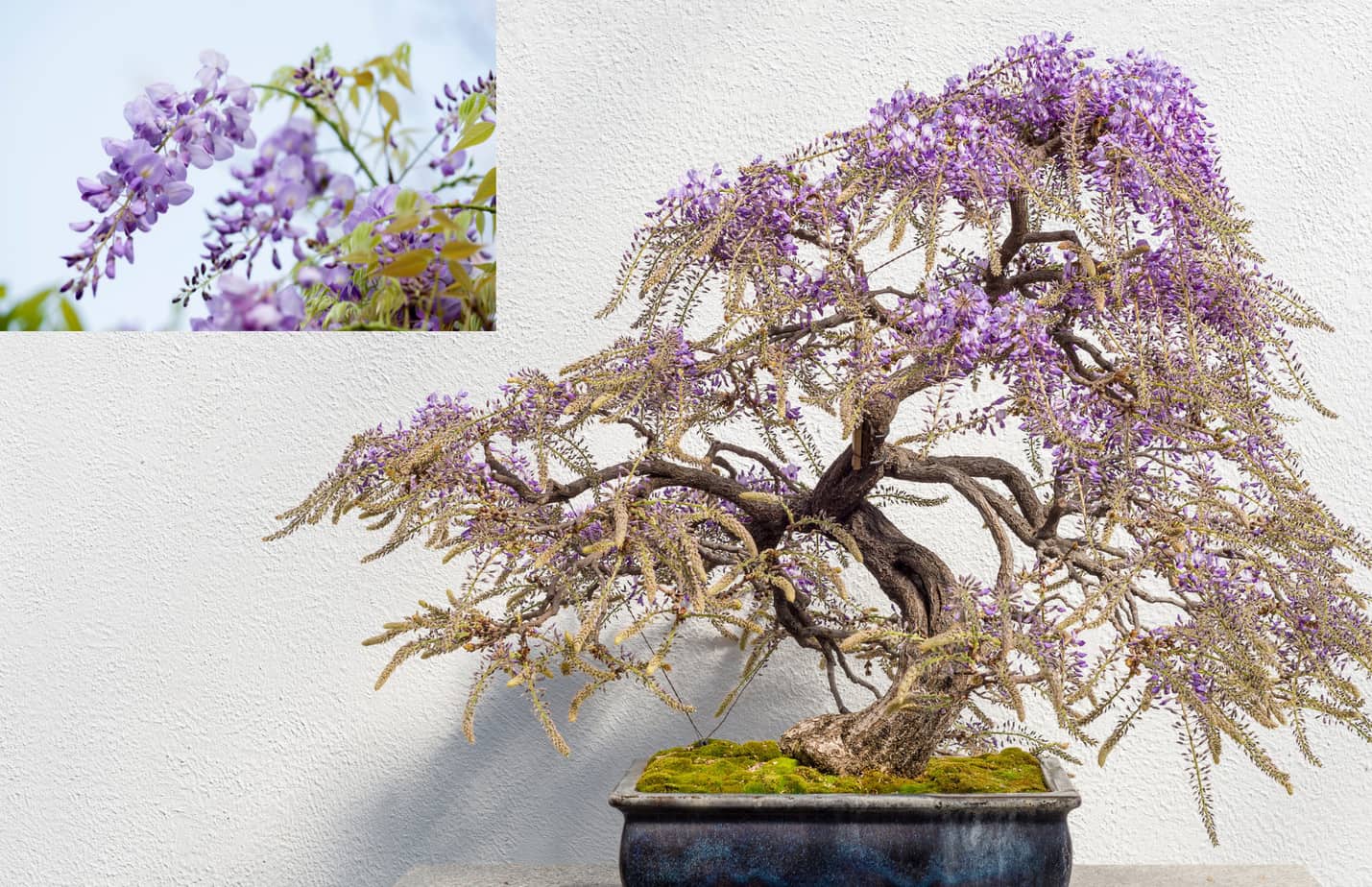
When it comes to beauty, wisteria bonsai is a great candidate for flowering bonsai species. This one is a member of the legume family. In its natural environment, wisteria can grow up to 20 meters high, but it can be trained to create a miniature version through bonsai art.
The beautiful flowers are arranged in clusters and they come in colors of purple, pink, white, or violet. They make a beautiful tree when in full bloom.
Care Guide:
For wisteria bonsai to produce generous flowers, it needs to receive plenty of sunlight. Just like bougainvillea, it needs six hours of daily sunlight. Hence, it is perfect for outdoor plants that can get optimal light coverage.
Use a slightly acidic potting mix that is fertile and well-draining. Provide plenty of water, especially during the growing season. Your wisteria would need much of this. You can use the bottom-up watering technique to ensure that the soil is saturated with enough moisture.
You also have to provide regular feeding at a weekly interval. However, we recommend using fertilizers with fewer nitrogen components. This would prevent the growth of too many leaves, giving room for flowers to go in full bloom.
Aside from hard pruning after flowering, root pruning is also a good practice to prevent vegetative growth. Such stress could induce your wisteria bonsai to bloom.
Prunus mume
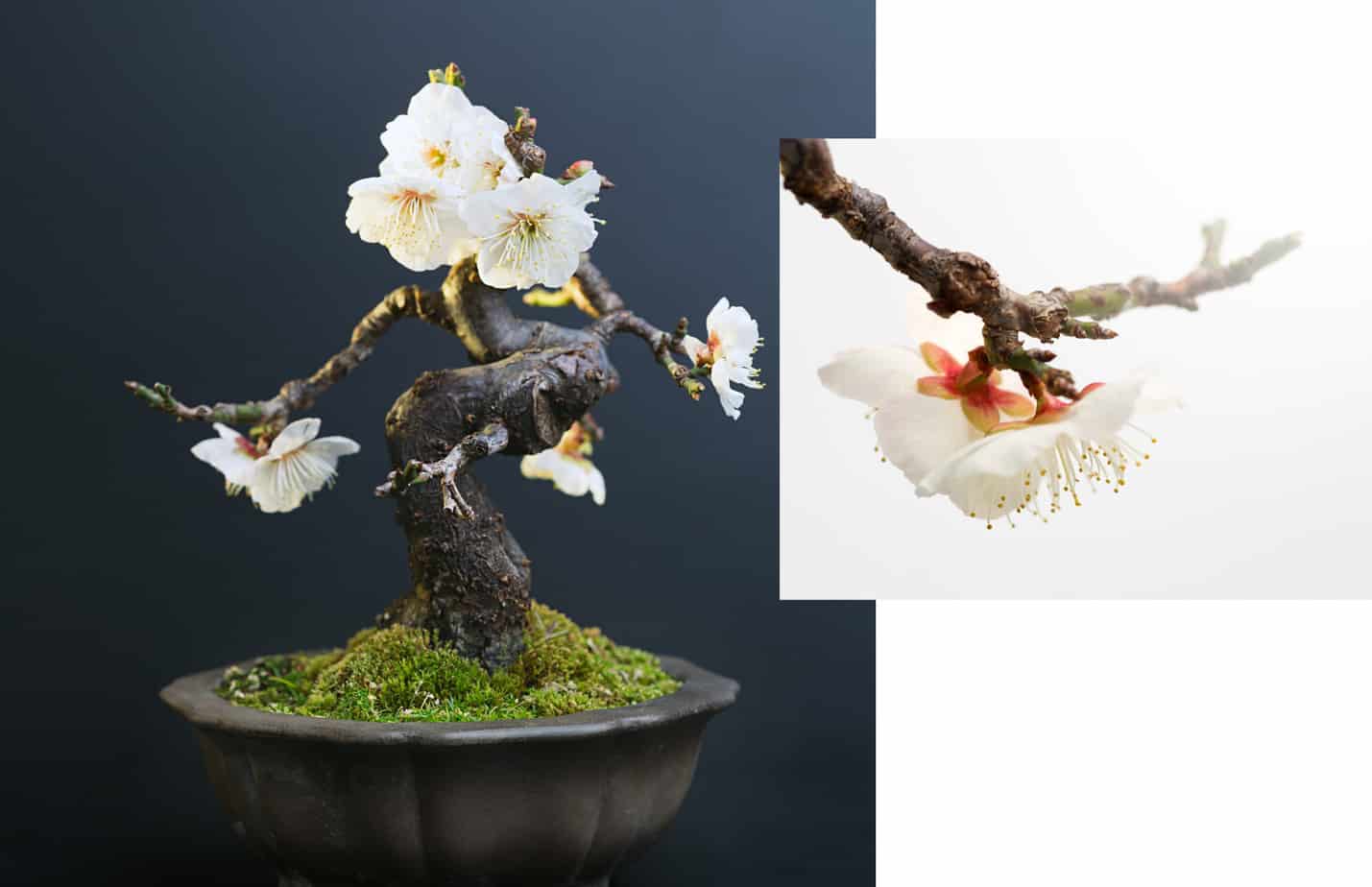
Prunus mume or plum blossom is a tree species that is a relative of plum and apricot species. Its origin can be traced back to China where fruit juice is being used as a flavoring in alcohol, sauces, and pickles.
This tree can grow up to 4 to 10 meters high. Due to its small size, plum blossom makes a perfect species for bonsai growing. During late winter to early spring, this tree produces white, red, or pink flowers. They have fragrant scents making them more attractive. After the flowers, fruits develop and ripen in early summer. Such fruits are edible.
Care Guide:
You can cultivate plum blossom as a flowering bonsai tree. Just make sure it receives enough light as it thrives in places with exposure to full sun. Use a combination of clay, sand, and loam for a well-draining potting mix. The soil’s pH must be slightly acidic.
This bonsai tree requires an ample amount of water. Never let the soil get completely dry. Feed with fertilizer has more phosphorus for better root development. To encourage better flowering, you must hard prune your plum blossom tree.
Be careful when shaping your plum blossom into a specific bonsai style. The branches are quite fragile and they might break off easily.
Pomegranate
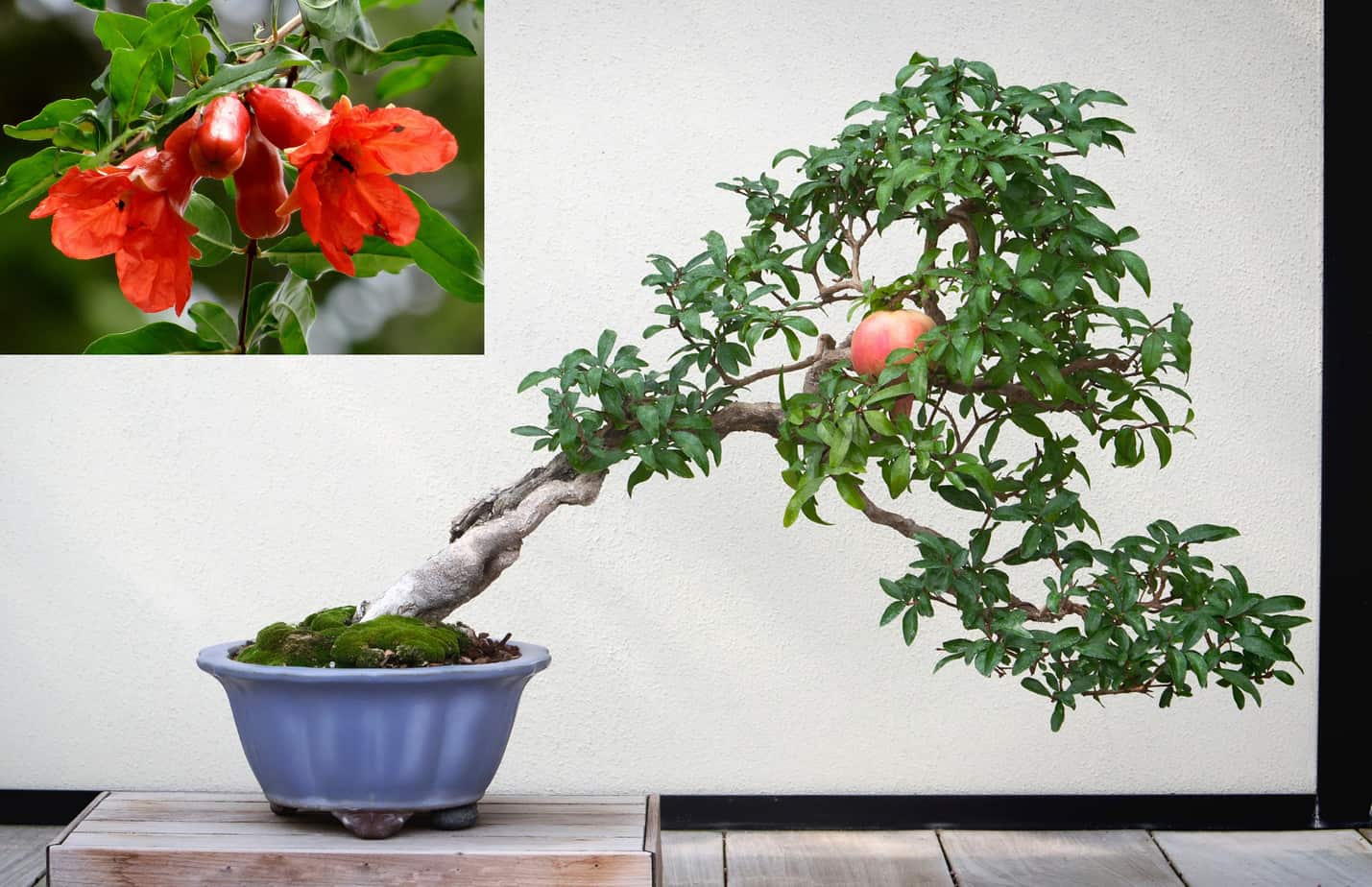
A tropical species that’s can be cultivated as one of the flowering bonsai trees is the pomegranate. Aside from its fruit, pomegranate is known for its ornamental value. The foliage is highly attractive for its glossy appearance while the flowers are adorable in scarlet hue.
Pomegranate is a small tree so it is highly suited to be grown as a bonsai tree. Naturally, it only grows about 4 to 7 meters high. However, there are also those varieties that could reach as high as 20 to 30 feet.
Care Guide:
This bonsai species will grow well in locations experiencing cool winters and hot, dry summers. During the growing season, the temperature must be above 85°F (29°C). And it’s also important that there’s a high temperature during the fruit development period as it contributes to the better flavor of the fruit.
As a flowering bonsai tree, the pomegranate loves to receive full sunlight. It thrives well in a warm environment and is very drought resistant. However, it will do better with proper watering, especially if you want it to produce fruits. The key is to do deep water every 2 to 4 weeks.
During the first 2 years, you must add fertilizer in November and March. Do regular pruning of the branches to train the growing bonsai into the desired shape and style.
Cherry trees
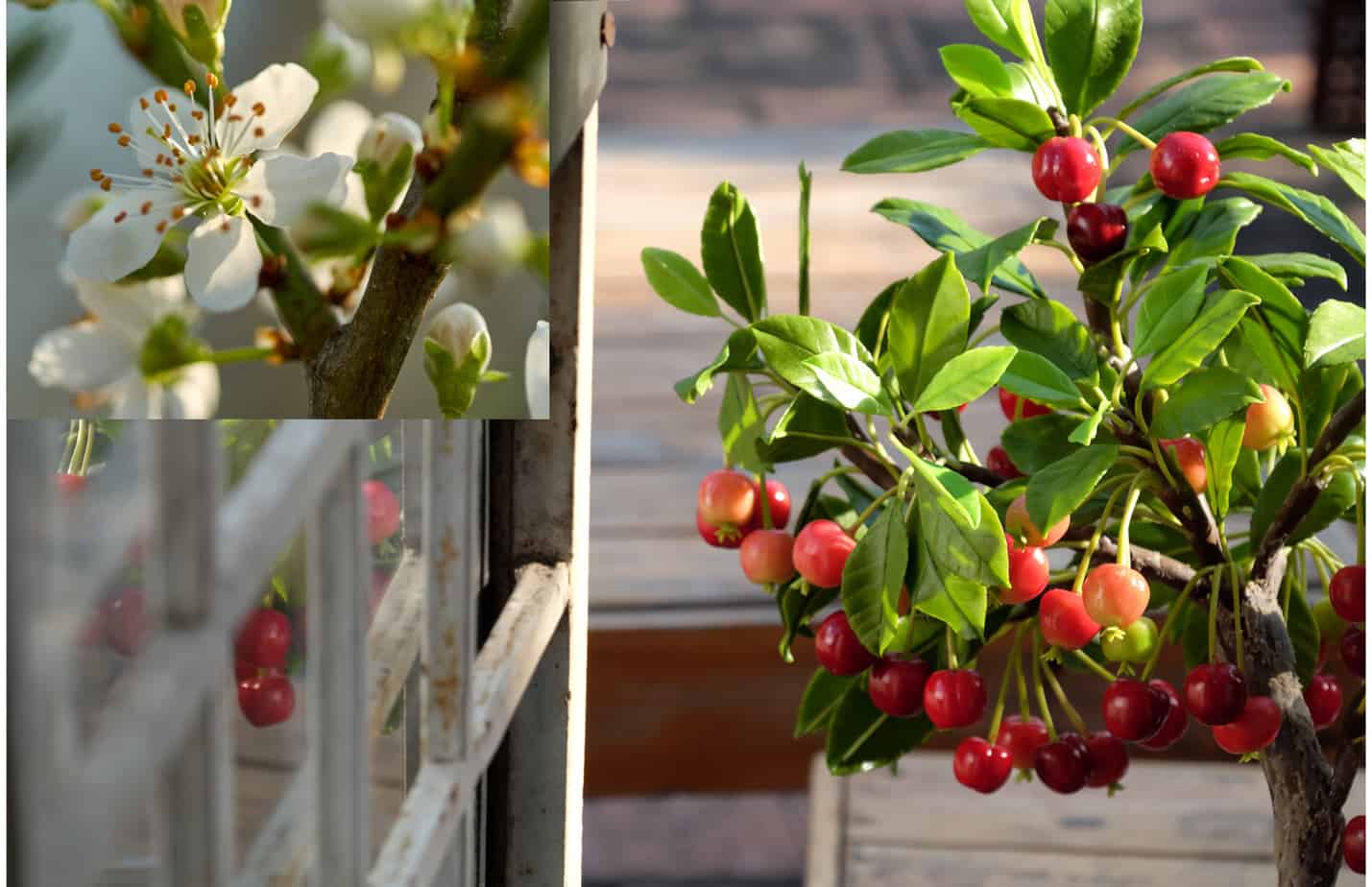
A relative of the plum blossom, cherry trees are a species that also belong to the Prunus genus. It can also be grown as a flowering bonsai tree. During spring, your cherry tree will go into full bloom covering the entire tree with white or pink flowers. They also produce edible fruits after.
This tree grows up to 11 meters high when grown outdoors under natural conditions.
Care Guide:
Just like other deciduous species, a cherry tree needs a sufficient amount of chilling temperatures (45°F or less) to produce maximum yield. Full sunlight is also needed for the flowers to bloom well. A well-draining and fertile soil suits well. But it has to have an acidic soil pH so the plant will be able to utilize the nutrients present in the soil.
Unlike the other bonsai tree species, cherries wouldn’t need frequent fertilization. Choose a weak fertilizer with low nitrogen content. And be careful not to overfertilize the plant. Prune the plant heavily to provide enough access to light and air. This will also help the plant for better fruiting.
Where to Buy Flowering Bonsai Trees?
Flowering bonsai trees are available here at Plantly. We offer a variety of bonsai plants and among them flowering bonsai. We have pink azalea, black cherry tree, dwarf cherry tree, and beauty berry.
We also offer free shipping on most of the products so hurry and grab that opportunity now.
Final Thought
Adding flowering bonsai trees to your garden will make a spectacular sight. Aside from the expression of art using various bonsai styles, the beautiful flowers will add color and life to your space. For higher chances of success, choose a bonsai tree species that suits the climate of your current location.
Whether you want to buy, sell or simply reach out to other plant enthusiasts, Plantly is the right place to be!


